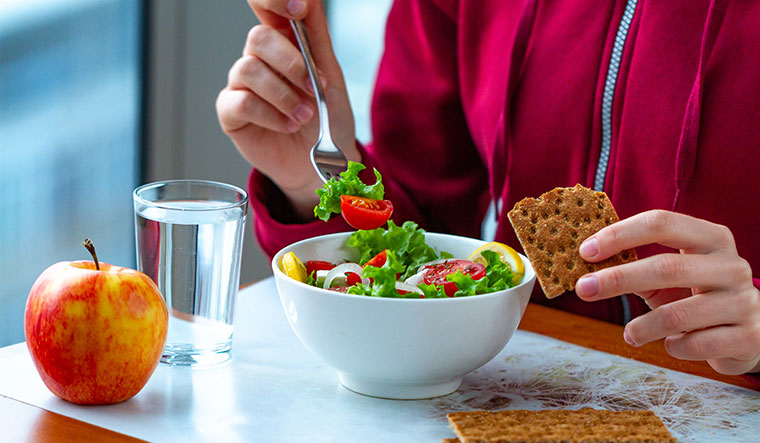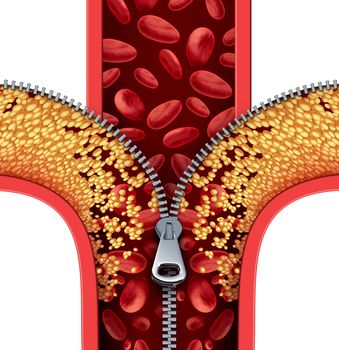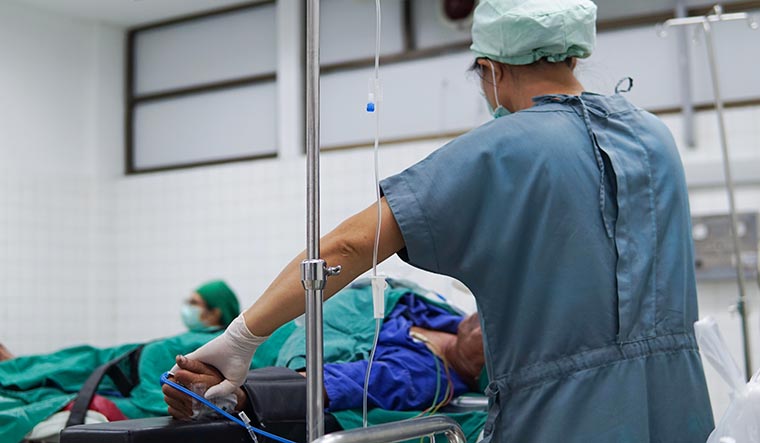Are you doomed to become overweight if you are genetically prone to obesity? A Chinese study published in the journal PLOS Genetics has identified six exercises that can help people with obesity genes to avoid weight gain.
The study included 18,424 adults aged 30 to 70 who provided information about their workout regimen. The researchers looked for genetic markers of obesity and examined the impact of 18 types of exercise on several measures of obesity, including body mass index, body fat percentage, waist circumference, hip circumference and waist-to-hip ratio.
Overall, people who exercised regularly had a lower BMI, even if they were genetically prone to obesity, compared to those who did not engage in regular exercise. Jogging topped the list in helping people avoid obesity. Regular jogging was associated with a lower BMI, lower body fat percentage and a smaller hip circumference.
Mountain climbing, walking, exercise walking, international standard dancing, and a longer practice of yoga also help reduce the genetic effects of obesity. But the study also found that exercises such as cycling, stretching, swimming and qigong were not effective in keeping weight in check.
Blood pressure control to prevent second stroke
One in four stroke survivors will suffer a recurrent stroke. But intensive blood pressure control can reduce the risk of recurrence, finds a Japanese study published in JAMA Neurology.
The trial included 1,263 people, average age of 67.2 years, who had suffered a stroke within three years before the start of the study. Half of the participants were randomly assigned to standard blood pressure control (less than 140/90mmHg), while the other half were assigned to intensive blood pressure control (less than 120/80mmHg). The mean baseline blood pressure was 145/84mmHg. During a mean follow up of 3.9 years, the average blood pressure was 133/78mmHg in the standard group and 127/77mmHg in the intensive group. Ninety-one people suffered a second stroke, but the risk was lower in the intensive group.
When the study results were combined with the findings of three similar studies, intensive blood pressure control was associated with a 22 per cent lower risk of a second stroke. A healthy diet, maintaining a healthy weight, exercising regularly, reducing stress and reducing salt intake are other factors that can help reduce the risk of a second stroke.
Eat plant-based food for a healthy heart
People who follow a mostly plant-based diet have a lower risk of cardiovascular diseases, such as heart attack and stroke, cardiovascular disease mortality, and all-cause mortality, according to a US study published in the Journal of the American Heart Association.
The researchers followed 12,168 middle-aged US adults for nearly 30 years. None of the participants had cardiovascular disease at the start of the study. Of the subjects, 5,436 participants died during the study period, including 1,565 deaths from cardiovascular disease. There were 4,381 incidents of cardiovascular diseases.
People who ate the most plant-based foods had a 16 per cent lower risk of heart attacks, stroke, heart failure and other heart conditions; a 32 per cent lower risk of dying from a cardiovascular disease; and a 25 per cent lower risk of dying from any cause compared to those who ate mostly animal-based foods.
Did You Know?
People who have a parent, sibling, or child with blood cancer have an increased risk for the malignancy. People with a relative diagnosed at a young age or with multiple affected relatives are especially at risk.
Blood
Blood test to detect Alzheimer’s
A blood test to spot Alzheimer’ disease even before symptoms appear could soon be a reality. Harmful clumps of the amyloid beta protein, associated with Alzheimer's, begin to accumulate in the brain about 20 years before people actually show symptoms of the disease such as memory loss and confusion, the researchers said.
By measuring the levels of the protein in blood, it would be possible to predict with 88 per cent accuracy whether the protein has accumulated in the brain as well. People with early Alzheimer’s brain changes can be identified with 94 per cent accuracy when the blood test is combined with age and the presence of the genetic variant APOE4—two major Alzheimer’s risk factors.
The study, published in the journal Neurology, included 158 adults over 50 without any cognitive or memory problems. The blood test could be even more beneficial once more treatments are available for Alzheimer’s disease. It would help to identify at-risk patients early and start treatment and prevent disease progression. The immediate advantage of the blood test is identifying people who have signs of the disease and enrolling them for clinical trials evaluating the efficacy of drugs to prevent Alzheimer’s.
Did You Know?
Smokers have nearly triple the risk of dying from cardiovascular disease and double the risk of a heart attack, a stroke or heart failure compared to nonsmokers. Quitting at any age reduces the risk, and quitting by age 45 can eliminate about 90 per cent of the cardiovascular risks linked to smoking.
BMC Medicine
Don't stop statins in old age
Discontinuing statins (drugs that reduce levels of fat in the blood) in old age can increase the risk of cardiovascular events, finds a French study published in the European Heart Journal.
It has been proven that statin therapy can help control cholesterol levels and prevent cardiovascular problems. But can statins prevent cardiovascular events in healthy, older adults? To find out, the researchers examined the medical records of 1,20,173 participants, aged 75 or older, without any history of cardiovascular disease. The participants had been taking statins regularly for two years prior to the start of the study. During an average follow up of 2.4 years, 17,204 people (14.3 per cent) stopped taking statins for at least three consecutive months. Of that, 5,396 people had to be admitted to hospital for cardiovascular issues. Those who discontinued their statins were 33 per cent more likely to experience a cardiovascular event, had a 46 per cent increased risk of a coronary event and a 26 per cent increased risk of a blood vessel problem, such as stroke.
Sling treatment for shoulder fractures
Nondisplaced shoulder fractures are usually treated by resting the shoulder in a sling for two to three weeks, followed by physical therapy. But for displaced shoulder fractures, the typical treatment is surgery in which the bones are rejoined with plates or metal screws.
But according to a European study published in the journal PLOS Medicine, treatment with a sling is as good as surgery for displaced shoulder fractures as well. The study included 88 patients over 60 who suffered a displaced shoulder fracture. Half of them had surgery, while the other half only had the arm supported by a sling. All patients underwent rehabilitation and were monitored for two years.
There was no significant difference between the two treatments. The patients who underwent surgery did not have better shoulder function, less pain or better quality of life than those who had the sling treatment. In that context, the study author suggested that treatment with a sling should be preferred as patients thereby avoid surgery-related complications.
Stay socially connected
People who are socially active in their 50s and 60s may have a lower risk of developing dementia, according to a British study published in the journal PLOS Medicine.
The researchers followed 10,228 adults aged 35 to 55 for 28 years. The participants provided information about the frequency of social contact with non-cohabiting relatives and friends and took cognitive tests several times during the study period.
The medical records of the participants were analysed for a diagnosis of dementia.
More frequent social connection was associated with a lower dementia risk. This association was linked to social contact with friends rather than relatives. People in their 60s who interacted with friends nearly every day had a 12 per cent lower risk of developing dementia than people who saw a couple of friends every few months.
Similar association was seen with social contact at ages 50 and 70. More frequent social contact in middle age was also associated with better cognitive function during follow-up.
Procedure to delay menopause by 20 years
Women can delay menopause by up to 20 years with a new 30-minute surgical procedure, claim doctors at ProFaM (Protecting Fertility and Menopause) in Birmingham, England.
The procedure involves having a piece of ovarian tissue removed using keyhole surgery. The tissue is then cryogenically frozen. As the woman gets closer to menopause, the tissue will be thawed and transplanted back into the armpit, which hopefully will restore their younger hormones and delay menopause. A similar procedure is already available to protect the fertility of young women and girls before undergoing cancer treatment.
The procedure to delay menopause has been performed on nine British women ranging from 22 to 36. The long term effects will be known only several decades later. The doctors hope that delaying menopause could help women stave off common menopausal symptoms such as low sex drive, anxiety, difficulty sleeping, hot flushes, night sweats and other health problems such as heart disease and osteoporosis that are brought on by menopause.
The surgical procedure was launched by Professor Simon Fishel, the fertility expert who pioneered IVF.
Osteoarthritis may increase heart disease risk
Two studies have linked osteoarthritis to an increased risk of heart disease. According to one study published in the journal Arthritis & Rheumatology, taking nonsteroidal anti-inflammatory drugs (NSAIDs) may increase the risk of cardiovascular disease in osteoarthritis patients. NSAIDs such as ibuprofen and naproxen are the most common medication to manage pain and inflammation associated with osteoarthritis.
For the study, the researchers matched 7,743 osteoarthritis patients with 23,229 people without the disease. Overall, osteoarthritis patients had a 23 per cent higher risk of developing cardiovascular disease. They had a 42 per cent higher risk of congestive heart failure; a 17 per cent greater risk of ischemic heart disease; and a 14 per cent greater risk of stroke. Taking NSAIDS accounted for nearly 41 per cent of the increased risk of cardiovascular diseases.
Another study published in the journal Osteoarthritis and Cartilage followed 4,69,177 Swedish people, aged 45 to 84, for up to 11 years. The researchers looked for cause-specific mortality among the 34,699 people who had osteoarthritis. Most cases were not linked to specific causes of death. But people with knee or hip osteoarthritis had a 19 per cent increased risk of dying from chronic heart diseases, and the risk increased with the duration of the disease.
Did You Know?
Pregnant women who change residence during the first trimester have a 37 per cent greater risk of having a baby with low birthweight and a 42 per cent heightened risk of premature birth compared with women who do not move during this period.
Journal of Epidemiology & Community Health
Track blood pressure with a selfie
Monitoring your blood pressure could be as easy as taking a selfie video, according to findings of a new research published in the journal Circulation: Cardiovascular Imaging.
The new smartphone-based technology, developed by researchers at the University of Toronto, uses transdermal optical imaging, which measures blood pressure based on facial blood flow changes. Ambient light penetrates the skin’s outer layer allowing optical sensors in smartphones to capture blood flow patterns. Transdermal optical imaging models use these patterns to predict blood pressure.
The researchers tested the technology on 1,328 Canadian and Chinese adults with normal blood pressure and then compared the values measured using the videos to readings taken using a traditional device. The imaging technology was about 95 per cent accurate in predicting systolic blood pressure and about 96 per cent accurate in predicting diastolic blood pressure with pulse pressure.
But several issues need to be resolved before the technique can be used widely. The study was conducted in a controlled environment with fixed lighting. The researchers need to make the system work in a normal home setting. Also, the study did not include people with extremely dark or fair skin tones and people with high or low blood pressure.
Mortality risk high post noncardiac surgery
Patients undergoing noncardiac surgery are more likely to die during recovery than during the surgery.
The study, published in the Canadian Medical Association Journal, included 40,004 patients aged 45 or above undergoing noncardiac surgery at 28 hospitals in 14 countries across North and South America, Asia, Europe, Africa and Australia.
Of them, 715 patients (1.8 per cent) died within 30 days of the surgery. Major bleeding, injury to the heart muscle and severe infection (sepsis) accounted for 45 per cent of the deaths.
Only five patients (0.7 per cent) died in the operating room compared to 500 patients (69.9 per cent) who died in the hospital and 210 patients (29.4%) who died after they were discharged from the hospital. “Given that most deaths in adults undergoing non-cardiac surgery occur not in the operating room but afterwards, efforts to improve postsurgical care has substantial potential to reduce mortality,” the study author said.
According to the study, nearly 100 million adults aged 45 or older, worldwide, undergo noncardiac surgery every year and about 1.8 million people die of complications within 30 days.
CONTRIBUTOR: SHYLA JOVITHA ABRAHAM







